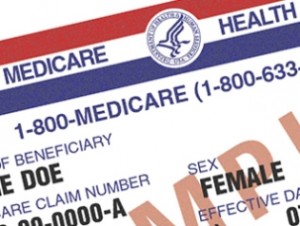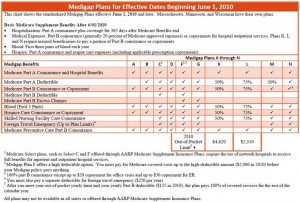7/1/17 UPDATE: This article states that UnitedHealthcare® does not offer a Medigap Plan G. However, they have recently announced that they will be releasing a United Healthcare Plan G in many states this year (2017). If that is what brought you to our site, contact us here to check if it is offered in your state. Or if it is not, find out what other options are.
Medigap Plan F is certainly the “headliner” among the 10 standardized Medigap plans – it pays everything that Medicare Parts A & B do not cover. However, Plan G can sometimes be a better value and an altogether better option for coverage. There are  several distinct advantages to Plan G, which we will detail below. But first, you should know how it differs from Plan F.
several distinct advantages to Plan G, which we will detail below. But first, you should know how it differs from Plan F.
Plan F, as mentioned above, is the most comprehensive Medigap plan – it pays for everything that Medicare A & B do not cover at the doctor/hospital. Plan G is exactly like Plan F with one exception – Plan G does not cover the Medicare Part B deductible. For 2017, this deductible is $183/year. This is a deductible that must be met at the doctor’s office. After that deductible is met, the benefits are the same for the rest of the year.
So, what advantages does Plan G have over Plan F:
– Price – Because it does not cover the Medicare Part B deductible, Plan G is always going to be less expensive than Plan F. But it’s less coverage, right? Because it doesn’t cover the Medicare Part B deductible? That’s true, but in almost all cases, the monthly premium disparity is significantly greater than the Medicare Part B deductible. For example, the average difference between the lowest-cost ‘F’ plan and lowest-cost ‘G’ plan, in a survey of 40 states in early 2017, is approximately $25/month. That’s easy math. Save $300/year in exchange for paying out $183/year. In many instances, the savings is even greater (have seen as high as $100/month difference). There are NO other benefit differences between ‘G’ and ‘F’. Click here to get a list of Plan G rates by email for your zip code.
– Rate Stability – This difference is not as straight-forward as the price differences mentioned above. The short of it is that Plan G is more rate-stable historically than Plan F. The reason for this is complex – it is called adverse selection. Essentially, the people on ‘G’ are, on average, healthier than the people on ‘F’. This is because Plan F is required to be offered (by all companies doing Medigap plans) to people in a “guaranteed issue” situation (i.e. losing employer coverage) without medical underwriting. This means, if you have health problems and are losing your employer coverage, you can get ‘F’ but not ‘G’. Over thousands of people, this means that ‘G’ attracts slightly, on average, healthier people. This can certainly have an effect on rates over time. For example, if a company’s Plan F goes up 6%, Plan G may go up 4-5%.
Moreover, Plan F is being eliminated in 2020. When this has happened with other plans in the past, it dramatically impacts rates with rates going up considerably more since there are no “new” 65-year-olds being put on that plan.
So why do so many agents promote, or push, Plan F? Well, first of all, some companies do not offer Plan G. For example, the largest Medigap provider nationwide sells Plan F but NOT Plan G. Secondly, many agents don’t even understand the information above, or if they do, choose not (for selfish reasons) to relay it to consumers.
The savvy consumer would take a Plan F until they had their first doctor visit, for which the plan would pay the Medicare Part B deductible. Then, once the Medigap plan has paid that deductible, they could switch to Medigap Plan G in the middle of the year (there are no enrollment periods for Medigap), and they would essentially have the equivalent of “F” for the rest of the year – for the cost of a Plan G.
The bottom line is that Plan G is both a better “deal” than Plan F and more stable over time historically and in the future.

If you have questions about how this works or want to get Medigap Plan G quotes, please visit our website or call us at 877.506.3378.


